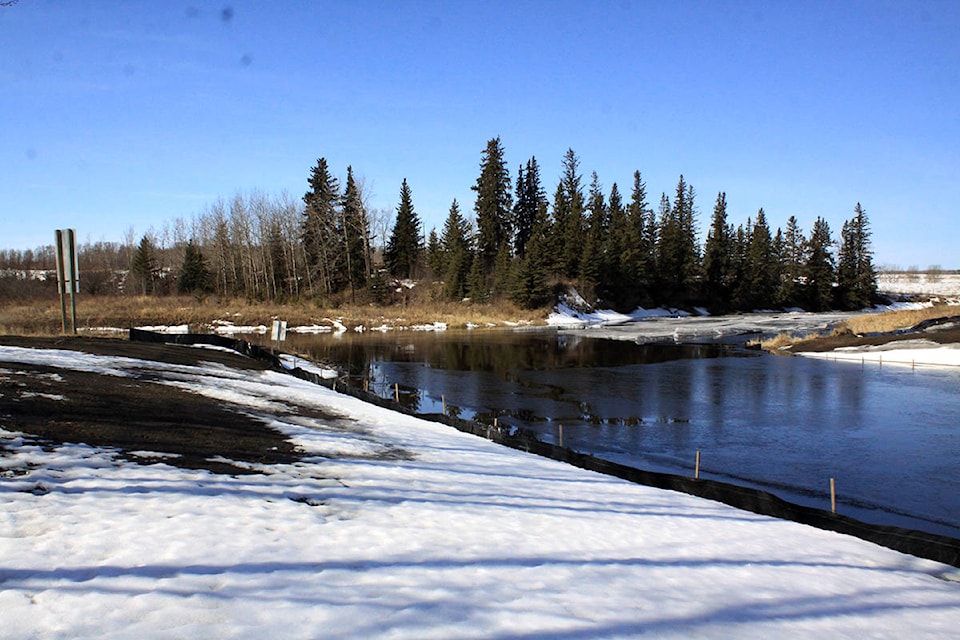A new potential solution has been proposed to get water pumping into Gull Lake.
Members of the Gull Lake Watershed Society (GLWS) made presentation to the Jan. 4 meeting of the Gull Lake Stablization Committee that may be able to keep the invasive Prussian Carp fish species out of the lake and allow the resumption of pumping water from the Blindman River to raise the lake level.
The presentation came at the same time that the committee was informed the water has dipped below the trigger measurement where Alberta Environment would normally kick start pumping operations.
However, a study done in the spring of 2018 found upwards of 1,000 of the invasive fish near the mouth of the pumping station’s inlet channel, eventually leading to the province announcing a five-year stay on any pumping.
Following a idea given to them by Red Deer based Lambourne Environmental, GLWS president Craig McLeod along with director Norval Horner brought forth the plan that would see the installation of two huge filters within the two kilometre long canal that leads to the lake from the pumphouse discharge.
“We have proposed putting two small dams in the canal with culverts going through them. Those would then each have a geo-tube filter securely fastened to the culvert ends like a big sock,” Horner explained.
“The filters have a huge filtration area and the water would be twice filtered, so we feel there would be no chance of any eggs or small fish getting through.”
The polypropylene fibre filters are woven into a thick heavy cloth and about 10 feet in diameter with a length a couple hundred feet. The water would enter the tube then exit through the 0.4 millimetre mesh and, according to the GLWS, leaving behind the smallest fish as will as the eggs which range from 1.0 to 1.5mm.
“The beauty is that the filters are disposable and not that expensive. With the pumping only working about two or three months each year, we think they would last several years before they became plugged. The filters would also help improve the water quality as it would remove sediment as well, so that’s another benefit beyond dealing with the carp,” Horner added.
“The key now is the lake is below the trigger level and we need to be pumping. We are quite anxious to maintain the system long term, but it is clear these fish are invasive and no one want them in the lake. So, we need a very secure solution to prevent them from getting through.”
It’s estimated the installation would cost about $100,000, with the filters coming in at $7,500 each and the plan already has laid out where they should be placed. However, two things still stand in the way — how the proposal would be funded and whether Alberta Environment will even approve the plan.
A meeting is slated to take place soon between the province’s technical experts, who are evaluating the process, and the GLWS. Horner admitted that evaluation might take some time, meaning the 2019 pumping season will like be missed.
However, he noted that might not be so bad as it would provide time to get the installation done and ready for 2020. As well, that might allow more time to figure out how it will be all paid for.
jordie.dwyer@ponokanews.com
Like us on Facebook and follow us on Twitter
